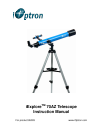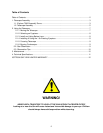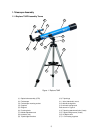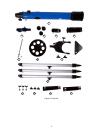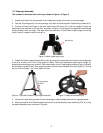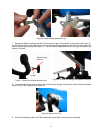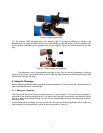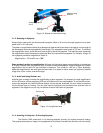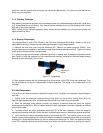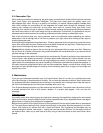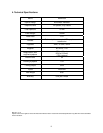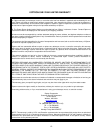
10
lock.
2.3. Observation Tips
When selecting a location for observing, get as far away as possible from direct artificial light such as street
lights, porch lights, and automobile headlights. The glare from these lights will greatly impair your
dark-adapted night vision. Set up on a grass or dirt surface, not asphalt, because asphalt radiates more
heat, which disturbs the surrounding air and degrades the images seen through the telescope. Avoid
viewing over rooftops and chimneys, as they often have warm air currents rising from them. Avoid
observing from indoors through an open (or closed) window, because the temperature difference between
the indoor and outdoor air will cause image blurring and distortion. Furthermore, it is preferable to let your
telescope reach outside ambient (surrounding) temperature before starting an observation cycle.
Wait a few minutes to allow your eyes to become used to the darkness before attempting any serious
observations. Use a flashlight with a red filter to preserve your night vision when looking at star maps or
checking telescope parts.
Avoid touching the eyepiece during observation. Vibration generated by this contact may cause the view to
move. Also avoid observing from locations where terrestrial vibrations are significant. Observing from the
upper floors of buildings may also cause the images vibrating.
Warning! Never attempt to observe the sun through your telescope without a proper solar filter. Observing
the sun, even for a fraction of a second, may cause immediate and irreversible harm to your eye as well as
physical damage to the telescope.
Some atmospheres may deform the image that you are observing. Planets in particular, when observed low
on the horizon, often present a fuzziness – the same object when observed at a higher altitude in the sky
may benefit from far better definition and a far higher degree of contrast. Furthermore, air turbulence in the
upper layers of the atmosphere may cause "trembling" to affect the view observed through the eyepiece. In
this case, reduce the magnification factor until the picture stabilizes. Keep in mind that even a small sized
but bright and well defined image will reveal far more interesting details than a larger, but less bright and
slightly fuzzy, view.
3. Maintenance
If you give your telescope reasonable care, it will last a lifetime. Store it in a clean, dry, dust free place, safe
from rapid changes in temperature and humidity. Do not store the telescope outdoors. Small components
like eyepieces and other accessories should be kept in a protective box or storage case. Keep the caps on
the front of the telescope and on the focuser drawtube when not in use.
Your iExplore telescope requires very little mechanical maintenance. The optical tube is aluminum and has
a smooth painted finish that is fairly scratch resistant. If a scratch does appear, it will not harm the
telescope.
Cleaning Lenses
Any quality optical lens cleaning tissue and optical lens cleaning fluid specifically designed for multi-coated
optics can be used to clean the objective lens and the exposed lenses of your eyepieces. Never use regular
glass cleaner or cleaning fluid designed for eyeglasses.
Before cleaning with fluid and tissue, blow any loose particles off the lens with a blower bulb or compressed
air. Then apply some cleaning fluid to a tissue, never directly on the optics. Wipe the lens gently in a circular
motion, then remove any excess fluid with a fresh lens tissue. Oily fingerprints and smudges may be
removed using this method. Use caution— rubbing too hard may scratch the lens. For the larger surface of
the objective lens, clean only a small area at a time, using a fresh lens tissue on each area. Never reuse
tissues.



